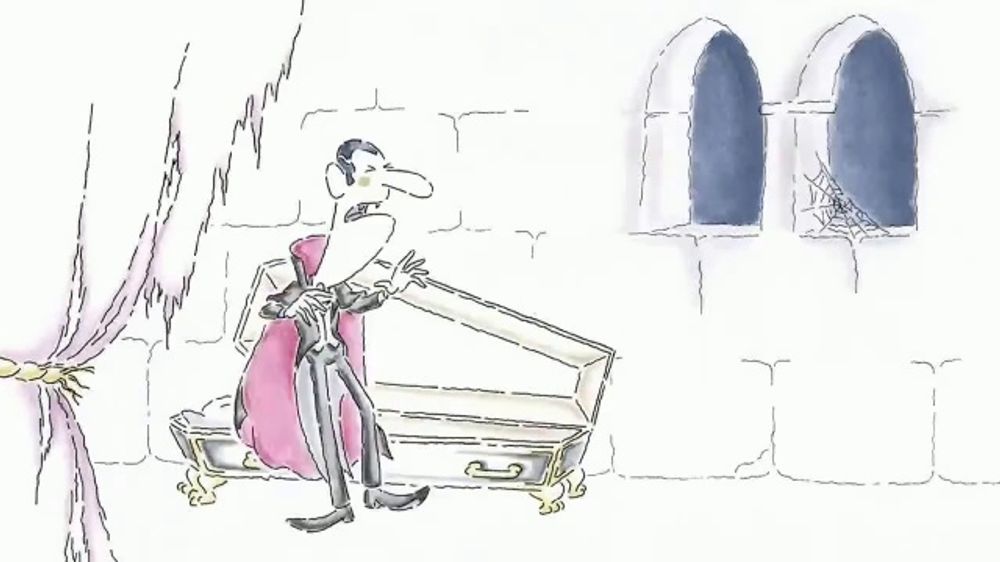The author of Dracula, the classic work of Gothic horror, is Bram Stoker — an Irish contemporary of Oscar Wilde who wrote popular fiction to supplement his income. The first edition of Dracula appeared in bookshops on 26 May 1897, priced at six shillings. The print run was around 3,000 copies, bound in plain yellow cloth with a one-word title printed in simple red lettering. In fact, this was a last-minute change. Just a few weeks before publication, Stoker’s working title for the manuscript was The Un-Dead.
Bram Stoker’s vampire novel later inspired numerous Hollywood adaptations and earned a reputation as a masterpiece of horror literature. The first film ever made featuring the vampire character Dracula was Drakula Halála (The Death of Dracula) from 1921. However, it was apparently not the first to be widely released, as its distribution was postponed until 1923. The distinction of being the first widely distributed film likely belongs to the German horror classic Nosferatu from 1922, which remains legendary to this day. Max Schreck’s portrayal in the title role was so terrifying that there were even rumours he might have been a real vampire. Other iconic entries in the long line of film adaptations include the 1931 Dracula starring Bela Lugosi, the 1951 version with Christopher Lee, and certainly Francis Ford Coppola’s Dracula from 1992, which, unlike its predecessors, portrays Dracula as an ordinary man in love, cursed by a terrible fate.
The new film Dracula: A Love Tale, which has just hit cinemas, was directed by Luc Besson and blends elements of both horror and romance. It has been recognised more for its grand production design than for its storytelling. Either way, it stands as proof that the character of Dracula remains a universal cultural symbol, still inspiring filmmakers — and not only them.
Dracula in marketing
Dracula — and vampire themes in general — also play a specific role in marketing, especially in television advertising. They represent a powerful archetype and cultural icon that can easily capture attention.
- Dracula is one of the most recognisable characters in world literature and film; audiences immediately identify his attributes — the cape, fangs, castle, bats, and the night.
- The vampire theme offers a blend of allure and threat, and advertising often plays on the transformation of the “frightening” into the “fun.” Creatives have wide latitude for both parody and serious stylisation: Dracula can be scary, comedic, elegant, or even absurd.
Television ads featuring Dracula have been appearing since the 1980s. One memorable example is a 1989 ad for Duracell batteries, which — if the commercial is to be believed — retain up to 90% of their power even after three years in storage. Well, who could resist that!
Video: Duracell – Dracula
Energizer also bet on Dracula in 1993 to promote its batteries. In the ad, the vampire chases after the Energizer Bunny — but he’s out of luck…
Video: Energizer Bunny Batteries – Dracula
Budweiser used the vampire theme in its 1990 Halloween ad, which suggests that Budweiser is a symbol of fun even for the creatures of the night.
Video: Budweiser – Halloween
The famous Coca-Cola also embraced the vampire theme in 1992. A vampire chasing a beauty chooses the red can of the popular drink over the maiden’s blood. He bites into it, drinks it dry — and transforms into an attractive young man…
Video: Coca-Cola – Dracula
Audi knows vampires don’t do well in daylight
In 2012, Audi came out with a very funny ad about a vampire who — equipped with a case full of blood (instead of beer cans) — drives to a vampire gathering. But things don’t turn out as expected. The ad introduces the new Audi S7 model and highlights the car’s dazzling LED headlights, which — naturally — destroy vampires. The ad was a hit at the 2012 Super Bowl.
Video: Audi S7 – Vampire party
Kellogg’s takes down vampires with cornflakes
The American company Kellogg’s, known for its range of breakfast cereals, released a humorous ad in 2014. A vampire flies into the bedroom of a beautiful sleeping woman to suck her blood, but his attention is caught by a box of Kellogg’s Crunchy Nut Cornflakes on the table. He spends the entire night enjoying the cornflakes until morning surprises him, and he tries to hide in a chest. However, it is already occupied by another vampire, who is also munching on cereal. They simply can’t resist…
Video: Kellogg's Crunchy Nut Cornflakes - Vampire
Kinder Bueno is more tempting than blood
It seems vampires don’t have as one-sided a diet as novels suggest. Some like to treat themselves to a sweet snack like Kinder Bueno.
Video: Kinder Bueno - Vampirer
Red Bull keeps vampires wide awake
The energy drink Red Bull not only gives you wings but also causes vampires to have trouble sleeping. That’s exactly what happens to a vampire who, after sucking the blood of a woman who had enjoyed an energy drink, can’t sleep and wakes up — much to his misfortune — prematurely…
Video: Red Bull – Vampire
Bewag’s solar power keeps your home safe from vampires
The German company Bewag AG, once a major electricity supplier in Berlin, no longer exists, but its vampire-themed advert still lives on. In the action-packed ad, vampires flee from the sun into a building, only to be surprised by a solar-powered chandelier…
Video: Bewag AG – Vampire
Nissan Murano 2017
Nissan also used vampire-themed elements, but the main character in their advert is not a classic Dracula in a cape. It’s more of a modern stylisation of a vampire, as we know from contemporary pop culture. Either way, the beautiful woman can’t resist either the vampire or his beautiful Nissan Murano car.
Video: Nissan Murano – Dracula & Girl
Diesel Jeans is betting on sexy vampires
In the ad for the famous Italian brand Diesel Jeans, American actress Mishel Prada shone as a sexy vampire, while Michael Dolen took on the role of her counterpart and vampire hunter. The advert, directed by Lior Chefetz, is charged with erotic tension. Diesel Jeans are incredibly exciting…
Video: Diesel Jeans – Sexy Vampire
And to add even more eroticism, the commercial for the antiperspirant AXE Dry has a similar vibe. It’s clear that even vampires like fragrances…
POM Wonderful protects against vampires better than garlic
Don’t have garlic at home? No problem! In a 2023 ad, the drink POM Wonderful is advertised as the perfect protection against vampires, and you definitely shouldn’t go to the cinema without it. A man in the movie theatre, surrounded by vampires, escapes unharmed only thanks to the pomegranate drink, which is rich in antioxidants.
Video: POM Wonderful: Theater
Vampires are trending
Vampire motifs, especially the character of Dracula, are very appealing to creatives and advertisers. The audience instantly understands the symbolism – there’s no need to explain at length who Dracula is or what his fangs, cape, or fog-shrouded castle represent. This “shortcut code” saves time and allows creators to focus on the story’s punchline. Vampires also offer a striking contrast between attraction and fear, which is an ideal combination for marketing. Ads with this theme have dramatic potential, evoking stronger reactions than ordinary, conventional motifs. The Dracula archetype can easily be parodied, modernised, or turned into comedy, which allows reaching different target groups – from children to adults. Compared to other motifs, vampires have the advantage of cultural universality: they work globally while still allowing for local variations.
And we must not forget the element of nostalgia – the audience knows this character from films and literature, which strengthens the emotional connection and immediate recognisability. This is exactly why Dracula and his world keep returning to television screens time and again – not only in films but also in commercials for various global brands.
Sources: theguardian, csfd.cz, cool.iprima.cz

